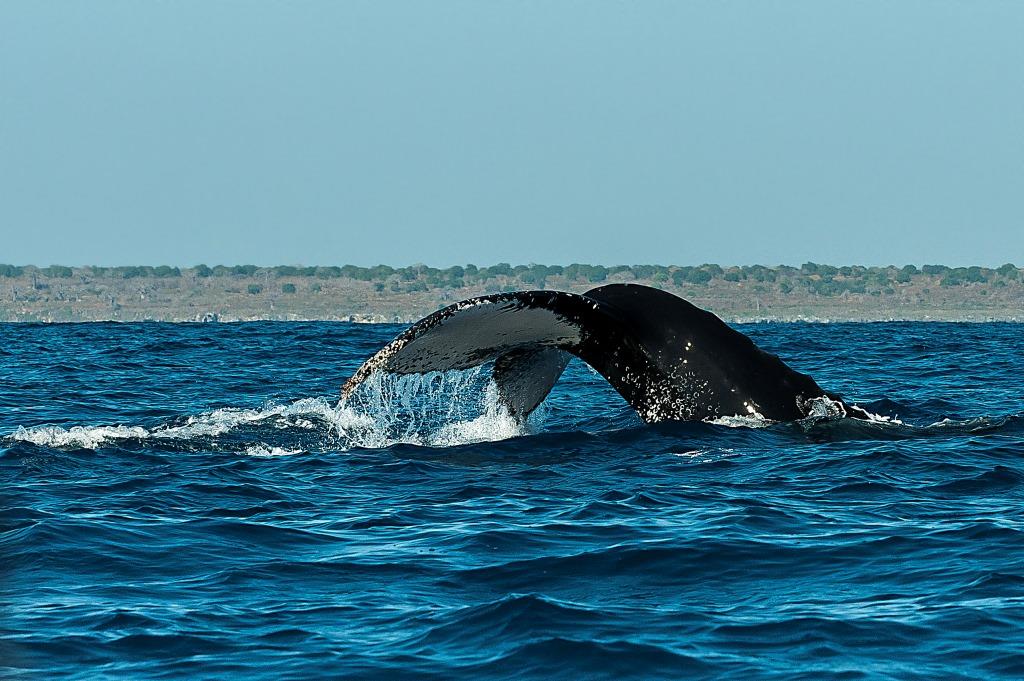Nuarro Dive Sites Guide

The Nuarro Dive Experience
Nuarro Lodge – Situated at the southern point of the Memba Bay on the Baixo do Pinda Peninsula. Nuarro Eco Lodge offers a wonderful variety of dive experiences. Best of all, it’s still pioneering stuff – the owners reckon they have only explored around 40% of the reefs! The peninsula is situated between the Nacala and Memba Bays, both of which have extensive reef systems, mangroves and a number of different dive sites. The Nanatha Bay (S14°12.226′ E40°40.573′) is ideal for all levels of diving because it offers the diver entry from the shore, with a natural buffer to the prevailing currents and has a gradual sloping bottom topography that slowly slips away towards the start of the shelf which sits just 200m from the beach.
The proximity to the continental shelf allows for extraordinary shore dives and boat dives within Memba Bay. Novices can enjoy the shallow sites of the house reef, full of coral bommies, sandy stretches and sea grasses and the proximity to the mangroves, optimal water temperature and visibility results in a great diversity of Cnidarians, such as; hard and soft corals, Ascidians, Hydroids, Sea Fans and Whip Corals. The walls along Baixo do Pinda, a halfhour to one hour-long boat rides offer more challenging diving with awesome topography including vertical drop-off’s, colourful pinnacles, swim-throughs and caves, and thanks to the strong currents, abundant pelagic species.
Moving on from the Nanatha Point there is a wall that runs for the complete circumference of the Baixo. This has somewhere in the region of 15km of wall diving and an endless amount of dive sites. There is an abundance of large and small fish life. Generally this would be done as drift dives and can only be available to the more experienced diver. One privilege of diving at Nuarro is that there are only the lodge divers on the reefs. So, you get the whole reef to yourself and dive times are usually dictated by air supply not the need to get back for the next boat of divers. Nuarro is also blessed with good visibility. The Mozambican current is constantly washing the bay of debris and with no river run off’s nearby and the deep waters so close, conditions are generally favourable to 40m plus visibility. With minimum visibility usually more than 10m.
The proximity of the reef to shore and gradual sloping land prior to the wall means conditions for diving from Nuarro are easy and lend themselves well to the novice or experienced diver looking for a relaxed experience. For the more adventurous there are the boat dives in the Nanatha Bay or to Baixo do Pinda.
One of the most fascinating aspects to Nuarro’s marine experience is the Humpback Whale (Megaptera Novaeanglae) season which runs from July to November. At this time the females have newly born offspring that needs fattening up for the journey south to colder waters. Large pods of whales stay in this region for the warm waters so the calf can survive as it grows. They bring their calves into the Memba and Nacala Bays for protection against bad seas and predators allowing the calf to be nursed for this period, whilst taking no sustenance themselves. The males are also here and are looking to be suitors for the journey south where they will mate to then produce new offspring. It is the males and sub adult displays of grandeur in an attempt to win the females affections that make for the most wondrous performance in the bay with repetitive breaching, fluke flapping, spy hopping and sailing. These moments are difficult to catch on camera unless you have a video camera, but the memory will last with you forever. Our speciality is to kayak with them. One pod can consist of thirty or more whales.

Dive Logistics
Best time to visit: is between July and November when the sea temperature drops to the mid 20o Celsius, so fish life is greater and the whales are with us. However, we are a year round destination and there is always activity in the water to appeal to the diver or snorkeller.
Dive conditions: the natural protection of the reef and shelter from the prevailing winds means that conditions are usually excellent. Water temperatures range from 24-30 degrees. Thanks to the peninsula’s location out in the channel, there’s constant cleansing by the Mozambican current, plus the absence of river run-off into the bay means visibility can be 40m plus and rarely drops below 10m. A big plus of Nuarro and Nacala Bay is the opportunity for shore dives.
Recommended gear: Open heeled fins with booties for shore entries and a 3mm shortie suit are quite sufficient for most diving off the Nampula coastline. If you feel the winter chill or plan on repetitive diving use a 5mm wetsuit. All dive equipment is available for hire but we have a limited range of sizes, so if in doubt check availability before heading here.
General Reef Description
The proximity of the reefs is indeed a paradise for snorkellers and divers alike. Swimming from any beach you first encounter tidal pools with many Crustaceans, Feather Stars, Oysters, Chitons, Limpets, Abalones, Top Shells, Winkles and Cone Shells. After the tidal pools you reach a region of shallow channels with large areas of Clump Sea Grass, Fan Weeds, Sargassum Weeds and Dugong Grass, where one will find and enjoy Brittle Stars, Sea Stars of many kinds, Sea Urchins, Sea Pans, Snake Eels, Sea Cucumbers, Cowries, Oposmobranches, a variety of juvenile fish and Green Turtles. Slightly deeper and area of coral heads is encountered, covered with bubble, Mushroom and fire corals, Hydroids, sponges, reef scallops, pearl oysters, reef and giant clams, anemones, soft corals and Christmas tree worms. All of these remain in easy reach for all divers and snorkellers, perfectly distributed for the trainer dives and refresher courses, at a depth ranging from 5 to 12 meters.
After 200 metres the wall ridge will appear. There one will find a dominance of brain anemone, stag horn, finger and leather corals with a Pallet of sponges, carpet anemones and Hydroids. Before the outer reef slope drops to greater depths there is a high degree of dominance of leaf corals on the gentle slopes. Fusiliers, Snappers, Emperors, Sweetlips and Grunts are common. The bottom of the wall sits at between 35m to 60m and then gradually falls away to depths in excess of 1000m. Large coral pinnacles rise from the base to the surface. On the pinnacles between 20m and 40m you can find the branching black and whip coral.

Specific Reefs
Anemone Gardens
Anemone Gardens is found directly in front of the Activities Centre about 100m from the beach and is part of the Nuarro Marine Reserve. This is an easy leisurely dive down to 10m that can be done at most times of the day.
This is a real photographer’s playground with great opportunities for spotting Shrimps (esp. Mantis Shrimp), Crabs, Snake Eels, Gobies, Egg Cowries, Nudibranchs, Flatworms, coral heads full of Chromis, Butterfly-fish, Wrasse, Damsel-fish, large schools of Tangs, Blue Spotted Stingrays and Moray Eels.
The Guardians
This site is part of the Nuarro Marine Reserve, that the lodge polices and works to maintain. The proximity of it to the lodge makes it one of the most popular sites to dive. The Guardians Consist of five pinnacles that face onto the deep blue, as if they were a line of defence against the ocean’s forces. Rising from 40m to 15m below the surface, they form part of the Nanatha Wall that runs in a semi circle around Nanatha Bay. There are several swim throughs and many nooks and crannies to be investigated. One can expect to spot Garden Eels on the sand banks south of the wall, Leaf-fishes, cleaning Wrasses, Butterfly-fish, Angel-fish, juvenile Napoleon Wrasse, Groupers and many juvenile Parrot-fish.
Fish Alley
This perfectly sheltered reef just off the centre of the bay can offer suitable conditions for all levels when out of spring tides. Coral bommies, many Garden Eels, Cowries, Gobies, Sand Perches, Mullets and Puffers are found. For the keen eye there is always the reward to find the striking Ribbon Eels. This is site where many fish come to visit cleaning stations, Bi-colour and Common Cleaner Wrasse compete to service the gills, skins and fins of all kinds of clients, sometimes not much bigger than themselves. Lyre Tail and Saddle Back Hog-fish are usually seen around as well as the Indian and African Sand Wrasse. Twist and Lined Wrasse are also resident on this reef. Other than all these macro delights there are also often passing Barracudas, Pilot Trevallies, Job-fish and Twin Spot Snappers.
Lobster Cove
The top of the wall sits at around 10m to 15m and then falls away in a vertical drop down into the abyss of 200m+. The wall snakes along the coast and has many little inlets that have been named the Coves. It is here that you will see numerous antennas of the Spiny Lobster poking out of the hideaways in the wall. Spiny and Ornate Lobsters find many places to hide in this area and their whitish antennas can be seen in the distance, poking out of the cracks. Towards the end of the dive you will find a hole in the wall at about 15m which is the entrance to a swim through with an overhang and finishes with an exit like a chimney through the top of the reef at 8m. Many Cave and Yellow Sweepers find shelter here during the daylight hours, as well as Dancing, Partner and Cleaner Shrimps.
The Gorgonian Forest
On a spring tide, currents are awash on the point making for a great drift dive. Large species of fish such as Sailfish, Giant Trevallies, Dog Tooth Tunas, Spanish Mackerels, Skip Jack Tunas, Bonitos and Napoleon Wrasse can be found here, you might even get the chance encounter with a Humpback Dolphin. The main feature of this dive site is the huge Gorgonian Forest, with specimens more than 3m in diameter, which runs for more than 100m along this part of the wall. Photographers will love the morning lights, with the sun’s rays illuminating the reef. You may even get a shot of the Long Nose Hawk-fish perched on its Gorgonian home.
Sacred Sands
Dotted along the coast of the Memba Bay are numerous little beaches. They are framed by high rocks that form semi circles reaching into the sea. Some of these beaches are considered sacred. Rituals can be held here to appease the spirits. It is from one of these beaches that a sand fall cascades down a steep wall creating a beautiful setting for embarking upon a dive. As currents sweep the area on a spring tide, it is a choice site for a drift; at the edge of the wall the continuous sand fall can be seen falling the 100m of vertical wall. The wall is steep indeed here and combined with the great visibility, this make the site a splendid Open Water dive. Tunas are common here, chasing smaller preys, which take shelter in the cracks of the wall. 5 different species of fusiliers are never too far from the reefs.

